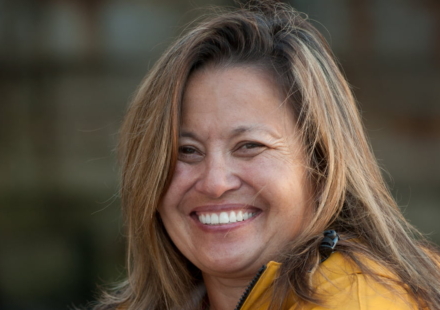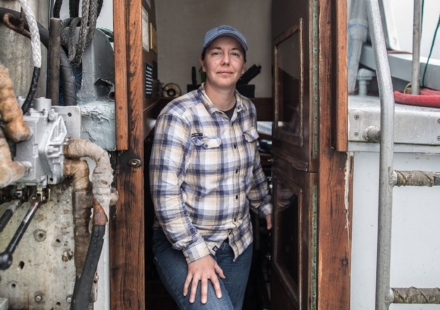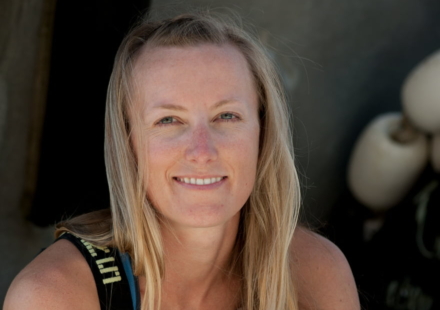Melanie Brown
Salmon, set net

I want there to be fish for Alaskans in the future and for my descendants to enjoy and benefit from as I have in my lifetime.
Where do you live and work?
My fishing work is based out of Naknek, Alaska and when I am not fishing I am based in Juneau, Alaska. I started fishing with my family in 1979 as a young girl. I am a sockeye salmon harvester in Bristol Bay with Indigenous roots to that place and other places along the western and southwestern coasts of Alaska. When it’s not fishing season, my work focuses on maintaining healthy habitat for wild salmon. My two kids fish with me and have observed my work around salmon habitat conservation. My crewman does as well. They get earfuls about salmon on the regular.
How long have you been working in the Alaska seafood industry?
I started fishing with my family in 1979 as a young girl
Describe your role in the Alaska seafood industry, including your day-to-day function and your role as it relates to sustainability.
I am a sockeye salmon harvester in Bristol Bay with Indigenous roots to that place and other places along the western and southwestern coasts of Alaska. I serve on a number of committees and boards so that I can be apprised of what is happening in the industry and the state of affairs regarding the future health of fish runs in Alaska. My winter work with SalmonState is focused on maintaining healthy habitat for wild salmon.
What is one way or one example of how your work ensures Alaska seafood is sustainable?
My fishing work is tied to sustainability because I am only allowed to fish if area managers for the Alaska Department of Fish and Game grant us fish openings based on their assessment of healthy returns of salmon making it up river to spawn and ensure future runs.
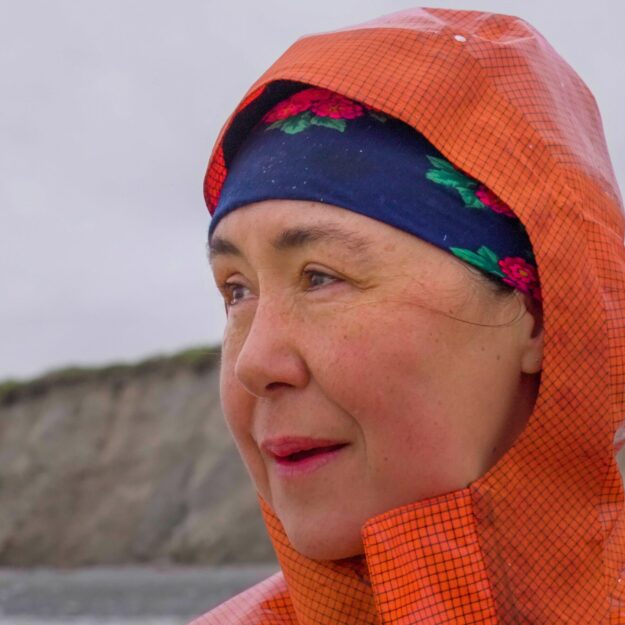
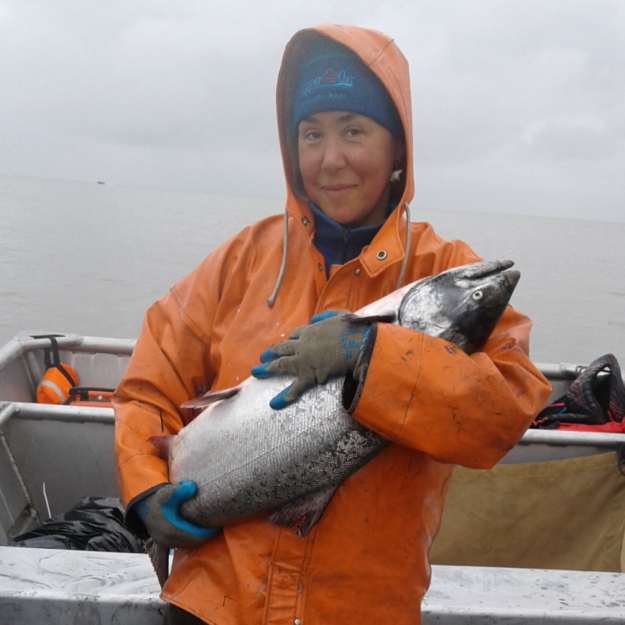
Why is sustainability/sustainable fisheries important to you?
Because I want there to be fish for Alaskans in the future and for my descendants to enjoy and benefit from as I have in my lifetime. Indigenous Alaskans also have important cultural connections to the fish that support and give them life through their traditional and customary practices.
What do you want people to know about sustainable Alaska seafood?
That our cold waters make for very tasty and nutritious fish protein.
How do sustainable fishing practices impact your daily work?
If the salmon are slow to return we do not get to fish. There have been times when we have had to stand down because a neighboring river system has not gotten their escapement yet. Escapement goals are set for each river system by area managers. Escapement references the number of fish that go upriver without being caught to ensure that there are enough spawners for future fish.
How do you work with researchers, biologists, fisheries managers and other fisheries to continuously improve Alaska’s sustainability practices?
By monitoring the Board of Fish process and participating in testifying on proposals that could have positive or negative impacts on the future health of our fisheries.
How have you passed down the sustainability practices to your family/crew?
My two kids fish with me and have observed my work around salmon habitat conservation. My crewman does as well. They get earfuls on the regular.
Anything else you would like to share?
We have a lot to treasure in our great state when it comes to seafood and I hope that the industry will always work to uphold the sustainability part of the brand. I think that ASMI is positioned well to pressure industry if they are not living up to the sustainability part of the ASMI brand.

